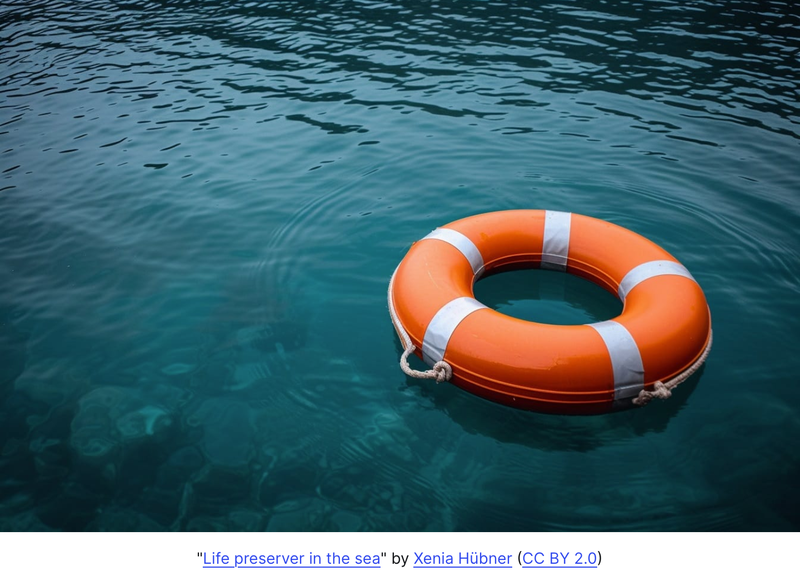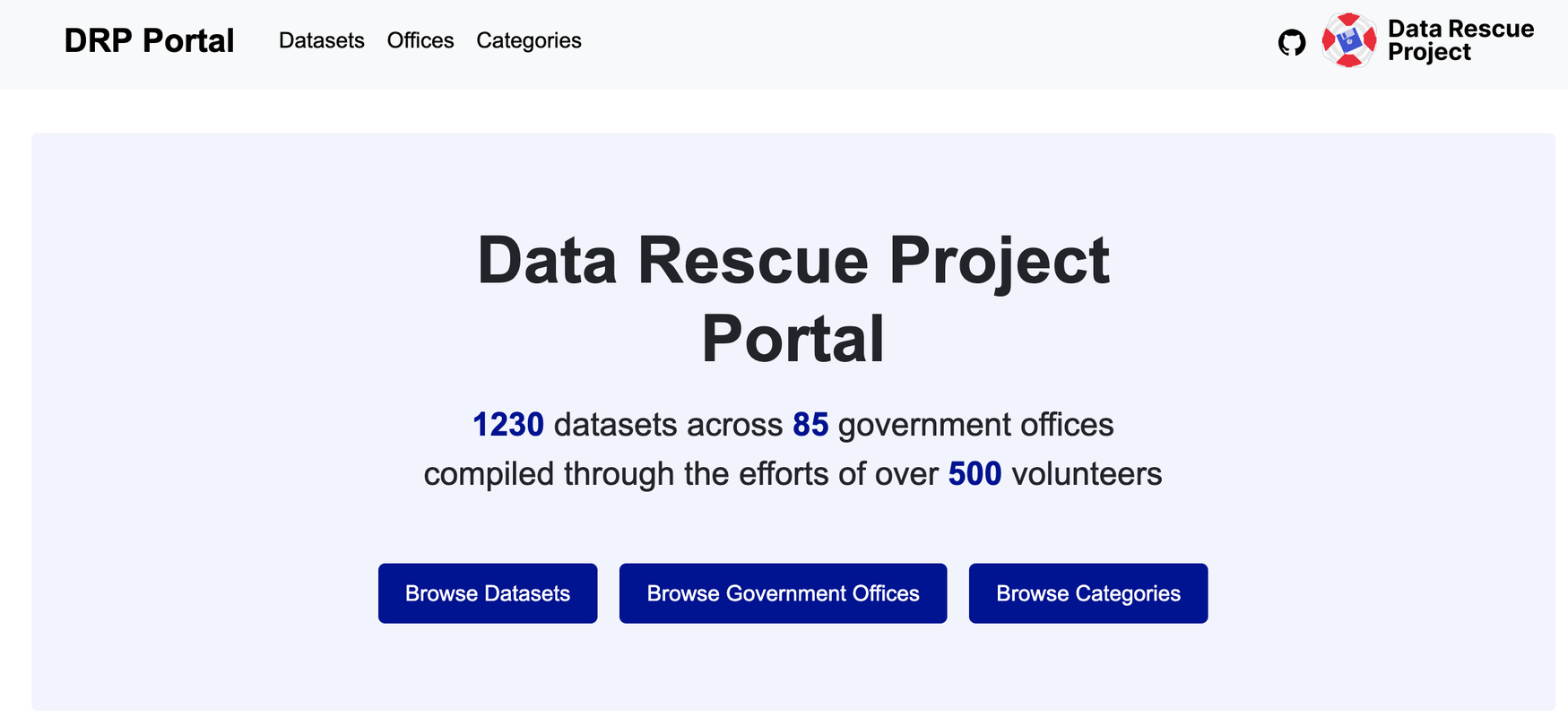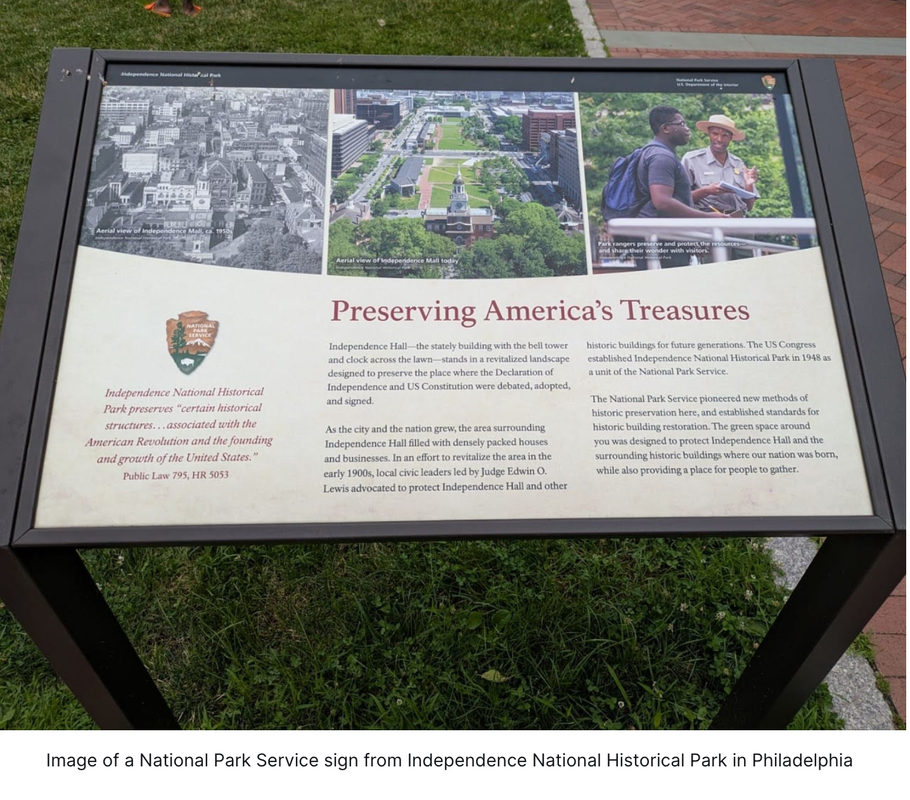How At-Risk Federal Data Is Being Rescued and Preserved
Q&A with a Founding Member of the Data Rescue Project
Blog Post

Aug. 12, 2025
In January 2025, New America joined the Data Rescue Project (DRP), an all-volunteer organization to help rescue at-risk federal data. Our build4good mentors and interns built an open data portal that centralizes datasets in a searchable, integrated hub. To date 1,230 datasets across 85 federal government offices compiled by over 500 volunteers have been rescued.
DRP is currently hard at work rescuing National Center for Education Statistics surveys and data that capture research on safety in schools, the state of public and private schooling across America, and long term longitudinal studies. See here for progress made thus far.
To understand the why, how, and what behind DRP, we spoke with Lynda Kellam, founding member of DRP.
What is the DRP?
In February, after the dismantling of the USAID and the temporary removal of CDC data, a group of data librarians and archivists formalized our work as the DRP, focusing on asynchronous data rescues and communication across rescue efforts. Our founding organizers came from three main organizations for data professionals: International Association for Social Science Information Service and Technology (IASSIST), Research Data Access & Preservation (RDAP), and the Data Curation Network, as well as the organization Saving Ukrainian Cultural Heritage Online (SUCHO). Many of our DRP members are librarians, but we also have researchers, technologists, students, and the general public helping us save federal public data.
Why is the DRP important?
The U.S. federal government is among the largest producers of public data in the world. The government and its principal statistical agencies, plus many other offices, collect data on an array of topics, from economics to weather to libraries. Federal public data underlie many of the everyday tools we use to know ourselves, our world, and our environment, no matter if we live in a rural or urban area. The public uses federal data to understand educational attainment, crime rates, demographic changes, community patterns, and more. Local governments use the data to plan services, and companies use it to plan business strategies. On our website, we have several public data user stories that describe why the data is vital–one talks about health data, and the other talks about educational data.
How did you get involved with the DRP?
I’ve worked with federal public data for a long time. I’ve been a data librarian at a university for almost 20 years. At my first library, we used public data frequently to support our patrons because we did not have access to and could not always afford commercial data sources. While my work has changed over the years, I have maintained an interest in and engagement with concerns about access to government information through groups like Preservation of Electronic Government Information Project and American Library Association’s Government Documents Round Table.
I am also the Secretary of IASSIST, an international data professionals organization, and one of the early founding groups involved of the DRP. As the secretary, I created a Google document in February 2025 directing our members to resources for data rescues, tools, and other resources. That Google document went viral and helped to build the coalition of organizations that have been involved in the DRP, and served as the basis of our current efforts and resources pages on our website.
The DRP is powered by an army of volunteers: How challenging has it been to engage volunteers in data rescue efforts?
We could not have rescued any of the data without our cohort of volunteers. We are very lucky to have drawn in so many people (currently over 800 at this point). Not all are active on the rescues, which can be more technical, but many are ambassadors for the work we do. We appreciate their efforts more than they know. It is challenging to retain engagement in ongoing volunteer efforts and keep people informed through our messaging channel and newsletter.
How does DRP partner with other organizations/institutions/entities?
The DRP Steering Committee is in constant contact with other organizations, including the staff of New America! Early in 2025, a Slack channel was created that many of the leaders of various organizations joined. We also invited members of other groups to our communication channels and vice versa. Having open communication channels has been incredibly beneficial, as these challenges cannot be faced by one group alone.
A recent example of these partnerships is the response to the removal of the Bureau of Labor Statistics Commissioner Erika McEntarfer. We try to support other groups in bringing awareness of the importance of public data and the role it plays in our daily lives.

Data Rescue Project Portal
How has the DRP evolved since its inception?
With the help of New America, we now have the Data Rescue Project Portal, which is a user interface for our spreadsheet of datasets. The tool provides access to data rescues across the different organizations working in this space. We want to make sure that the data being rescued is discoverable to the public. We appreciate the amazing assistance and support of New America volunteers.
In addition, this July we started the #SaveOurSigns campaign in conjunction with a group of librarians based at the University of Minnesota and the organization Safeguarding Research & Culture. This effort mobilized in response to the administration’s orders to review signage content at the National Parks. As we’ve become a more formalized organization, we’ve been able to partner with other groups to support these kinds of projects.

What do you think is needed in the short term for the DRP to continue its work?
We can always use volunteers to help with data rescues or to followers on our Bluesky account to spread the word about the importance of public data. Also, keep sending in your photos of interpretive signs from the National Parks! We welcome all your photos.
What are the long-term goals for DRP? And what is needed to achieve these goals?
In the long term, the DRP Steering Committee is looking at ways to develop and continue infrastructure for rapid response rescues and for storage for our larger data rescues. We have been fundraising on an individual level and are actively seeking out other fundraising opportunities
How can people be involved?
Our work is supported by volunteers and connections to the wider data rescue network. We depend on everyone’s effort and interest!
- If you are interested in volunteering, please fill out our volunteer form.
- Stay up to date on what is happening by subscribing to our newsletter or following us on Bluesky.
- Let others know about what is happening with our data! Tell your colleagues, family, and friends–everyone.
- If you work with researchers, let them know about our DRP Portal as a place to find datasets that have been taken down (or add it to your LibGuides).
Donate to us and help us buy data storage so we can rescue more data!